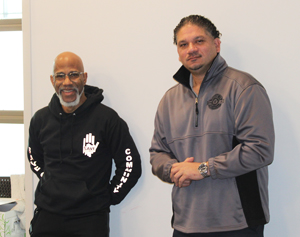
By Fletcher Word
Sojourner’s Truth Editor
Everyone seems to agree that all must pull together in order to end the current wave of gun violence in Toledo. But can everyone pull together?
Emphasizing the need for the community, the citizens and leaders of Toledo to coordinate activities to solve the issue of gun violence, Toledo Wade Kapszukiewicz said at a meeting this past Saturday in addressing the issue:
“We have to do everything we can to make things better here in Toledo … [this] is an attempt to link together all the good people in this town who are trying to make things better.”
Similarly emphasizing the need to work together on Saturday, former Mayor Mike Bell said: “This is a team thing, politics is not an issue.”
The issue facing Toledo, however, is that all those good people, the team, were not at the same meeting and haven’t been at the same meetings over the past few weeks trying to address the issue of gun violence that claimed 64 lives in Toledo in 2022, 71 in 2021, 61 in 2020, after years of totals less than 40 and as low as 13 back in the 2000s.
The current Kapszukiewicz administration has brought in a consulting group, Cities United, and has held a number of meetings with business leaders, social services groups, judges and prosecutors, pastors and school children and parents in order to explain a data-driven approach to pinpoint the problems of violence and to form a “collective vision” to connect all the resources in the city that can contribute to the solution.
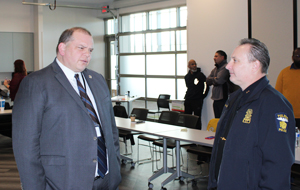
Saturday’s group in the Cities United meeting included elected officials, members of the safety forces, union representatives, the NAACP leaders and agency leaders, among others.
Meanwhile the four former mayors – Donna Owens, Carty Finkbeiner, Mike Bell, Paula Hicks-Hudson – have held a series of community meetings to collect the concerns and the input of citizens and have crafted an ordinance that they will submit to Toledo City Council that will address a dozen of the root causes of that violence.
The Cities United Meeting
The first meeting on Saturday was held at Mott Branch Library and was conducted primarily by Kapszukiewicz, Councilwoman Tiffany Preston Whitman and Cities United Executive Director Anthony Smith.
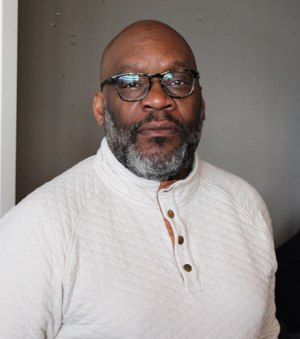
Smith presented Cities United’s “Our Collective Vision,” a data-driven examination that breaks down where such violence happens within the city and who the victims and suspects are; what is currently working to curb the violence and where the agency sees opportunities for improvement. Additionally the report maps out what the solution is to decrease violence and how to “leverage … the milestones to guide, facilitate and track progress towards the development and enhancement of a comprehensive public safety plan.”
“Our collective vision is where we should have started some years ago,” said Whitman about the plan.
“It’s really important to start with the data,” said Smith as he began his explanation of the initial proposal. “We have to pay attention to those most impacted – this is a public health crisis we need to address.”
As the data shows, those most impacted by the current wave of violence in Toledo – both victims and suspects – are young Black males, certainly no surprise to anyone attending that meeting. To get control of the level of violence, particularly the uptick in violence over the past three years, suggested Smith, is to interrupt the cycle by “leveraging political and financial capital to invest in” six primary solutions “led by community members and community-based organizations.”
Those six solutions include the use of (1) violence interrupters (a program initiated in Toledo several years ago); (2) street outreach (with other members of the community); (3) hospital-based violence intervention (reaching out to victims and their family and friends as soon as they get to the hospital after a violence episode); (4) diversion and alternative pathways (finding alternatives to incarceration); (5) coordinated crisis response team (finding alternatives to police responses, particularly in mental health issues) and (6) collaborative public safety funding models (such as seeking resources from outside the city given the limitations of municipal budgets).
The next key steps, as laid out by Cities United, are to construct a plan by building partnerships and relationships, constructing a multi-year plan of action, creating a sustainability plan and implementing the plan while also developing a continuous improvement evaluation.
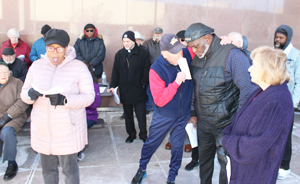
The Coalition for Peaceful Toledo Neighborhoods Meeting
Meanwhile …
Cities United has laid out a proposal to develop a plan to curb gun violence but former elected officials have already laid out just such a plan.
Saturday’s second meeting on the issue of violence and how to cope with it was held at One Government Center as the four former mayors laid out their plan to take action immediately with an ordinance they will present to City Council this week.
The ordinance is a plan and the culmination of more than five months of community town halls and other meetings involving concerned citizens and survivors of violence.
“This 12-point platform, developed by … approximately 250 residents at our town hall meetings, can make Toledo neighborhoods peaceful and friendly again,” said Kim Baker, a coordinator for The Coalition.
State Senator, and former mayor, Paula Hicks-Hudson opened the press conference by emphasizing the input the Coalition has received from a number of community people. “It takes committed folks who are willing to say ‘I don’t have all the answers but I’m willing to do what I can.’”
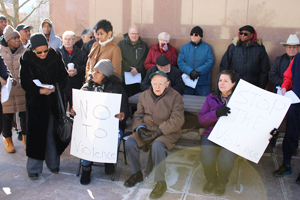
“We want to build our neighborhoods up,” said Bell as he introduced and read the first four points of the proposed ordinance. “You can’t have quality of life without peaceful neighborhoods.”
The first four points are:
- Youth programming that provides access to mentorship, job training and educational opportunities;
- Neighborhood support and community building resources that foster positive relationships and build stronger, more cohesive communities;
- Increased police presence and involvement in neighborhoods, focused on community policing efforts that prioritize communications, trust and respect between law enforcement and residents;
- Our judicial, probation and parole system, while following the law, must apply stringent penalties to convicted offenders and limit the ability of repeat violent offenders to walk the streets while awaiting trial.
“What we are presenting is what we have heard. It’s time to move on and get things done … people want this program,” said Owens introducing the next four points of the proposal:
- Support for parents and parenting classes, including access to resources on conflict resolution and parenting techniques;
- Revitalization and cleanup of neighborhoods, including investment in infrastructure and beautification efforts that support community engagement and increase access to public spaces;
- Mental health resources that provide access to counseling, crisis intervention and other mental health services;
- Renewal and strengthening of Community Watch programs, including the expansion of programs and resources that facilitate communication and engagement between neighbors and law enforcement.
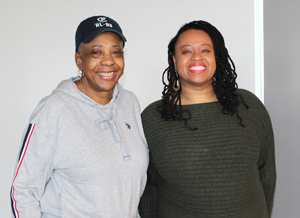
“All [the points] are important and need to be part of a package,” said Finkbeiner as he read off the final four points:
- Strengthening of gun laws, including the adoption of local policies and ordinances aimed at preventing gun violence and supporting responsible gun ownership;
- Safe methods of reporting crimes, including the development of anonymous reporting mechanisms and the adoption of policies that protect whistleblowers and other informants;
- Cameras in the neighborhoods, including the deployment of surveillance technologies that are subject to strict privacy protections and oversight mechanisms;
- Enforcement of curfews, including the adoption of clear, consistent policies on curfews for minors and the provision of resources and support for parents to ensure compliance.
Now the questions going forward are: (1) what will be the reaction of City Council members and the Kapszukiewicz administration to the Coalition ordinance? (2) as the Cities United project progresses, will they utilize the same approach to assembling a plan by involving Toledo residents as the Coalition did? and (3) will the final Cities United Plan differ in any major aspects from the plan already proposed by the Coalition?
